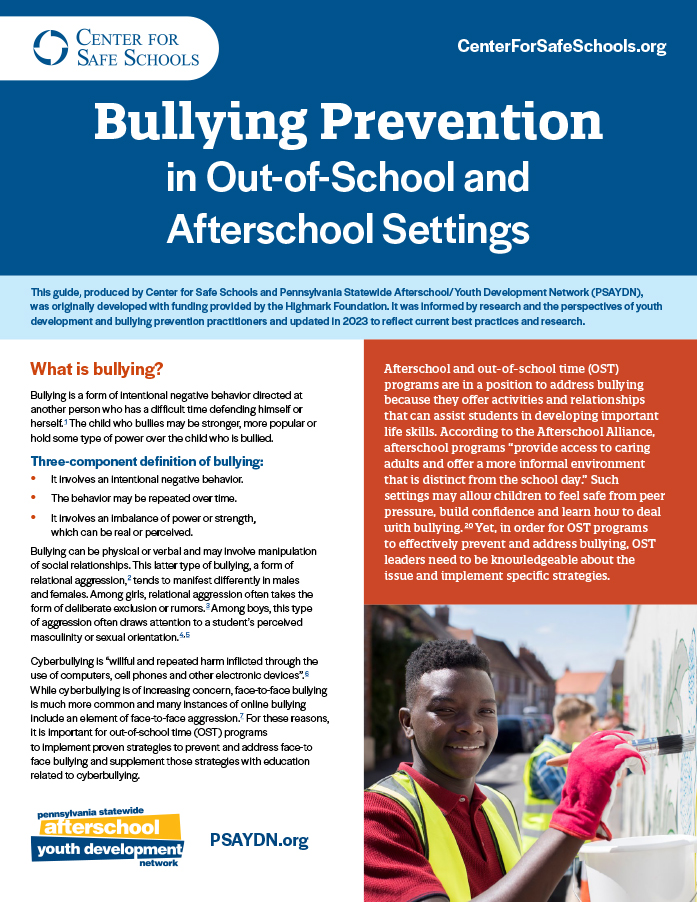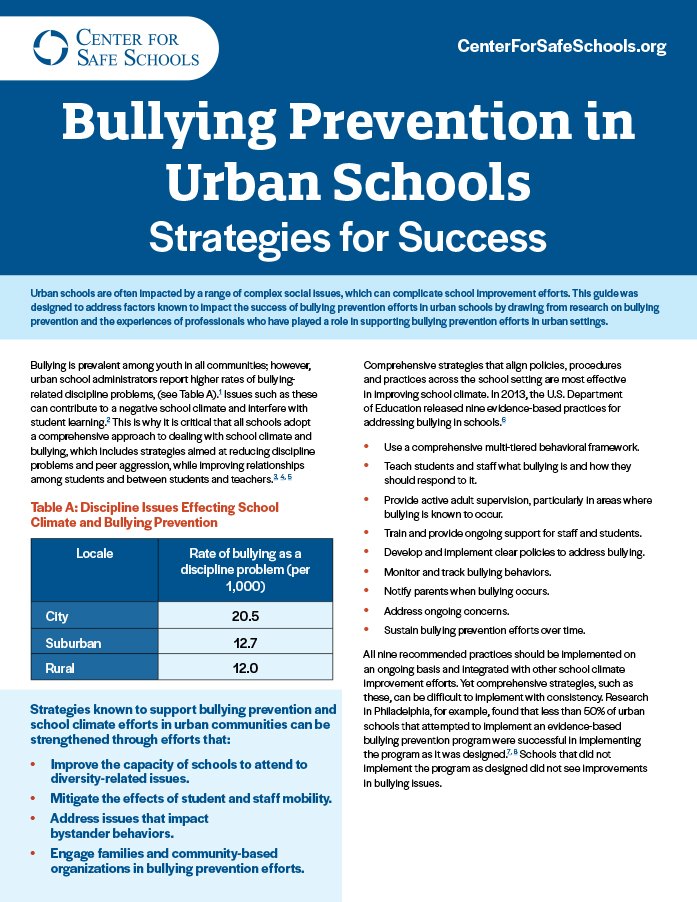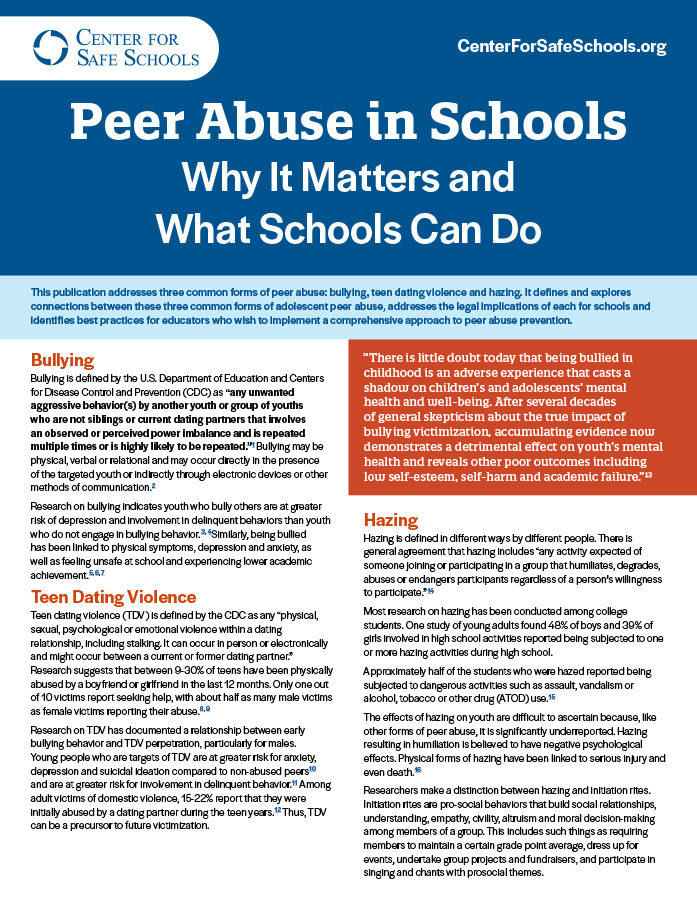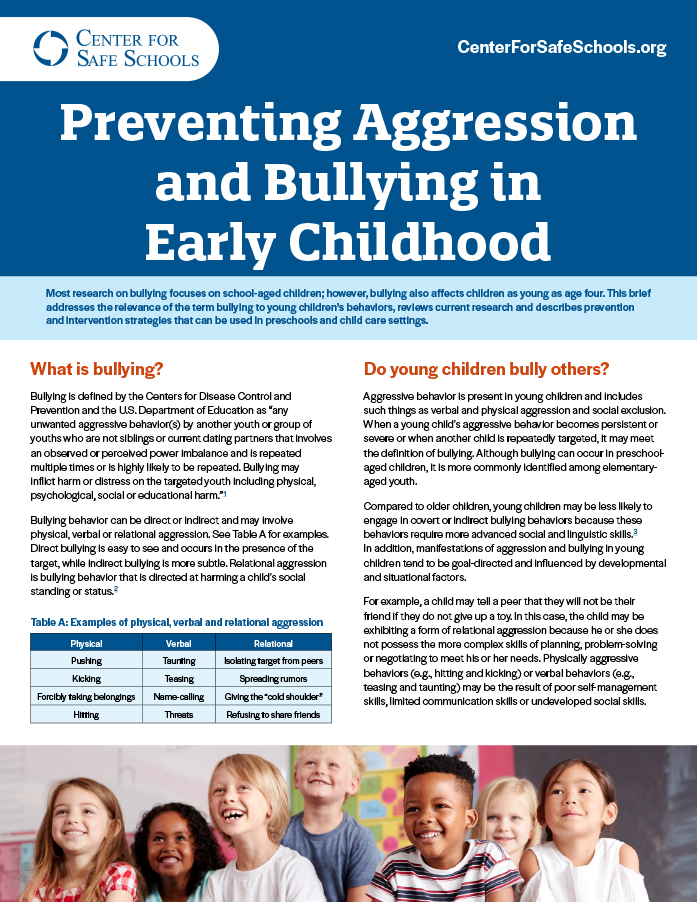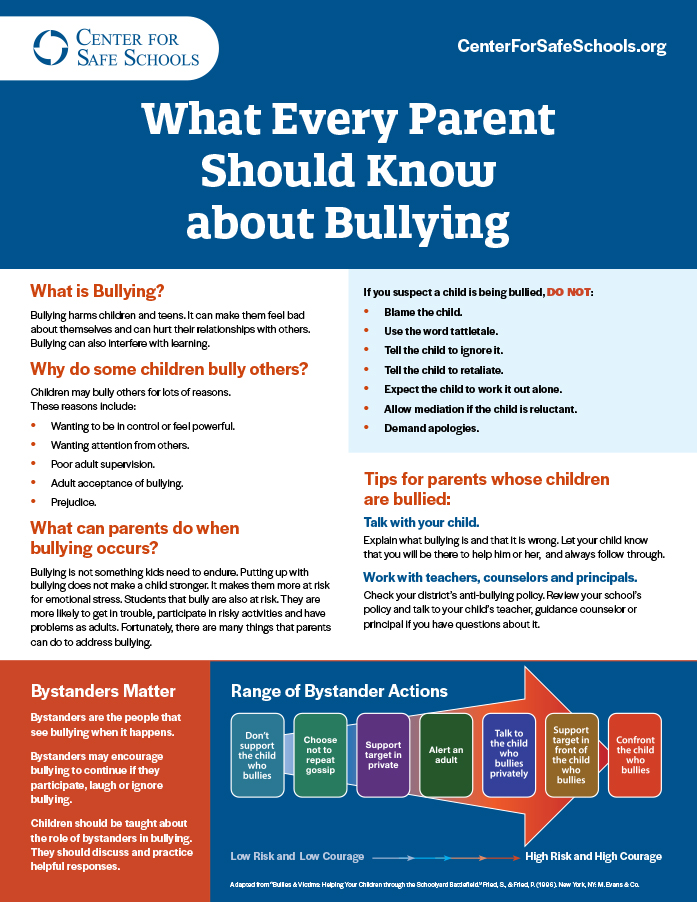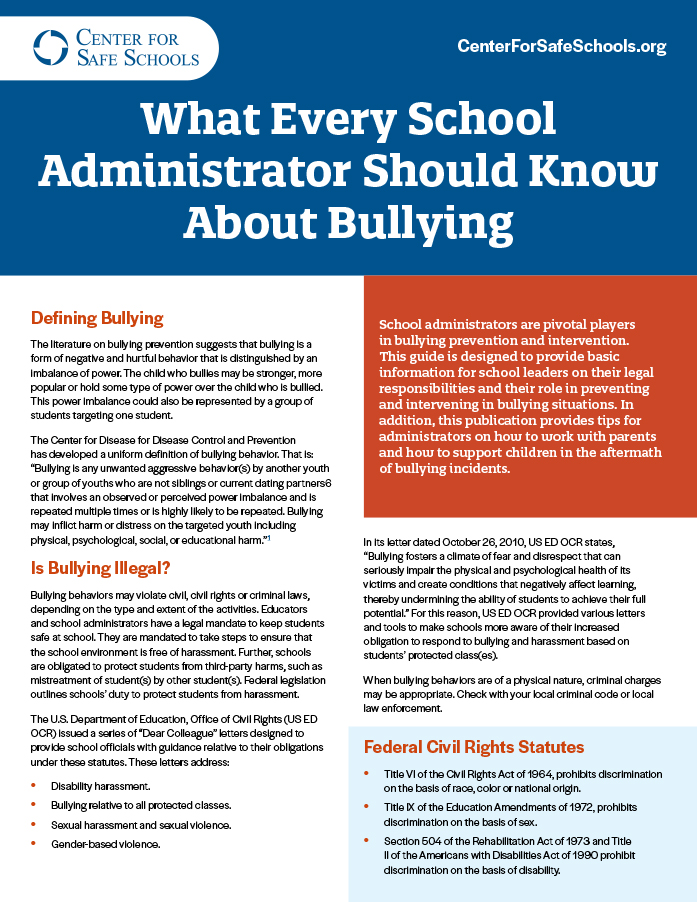Sample Letter to Schools
Keep a copy of the letter for yourself. It is recommended that you send this request to the principal by certified mail, return receipt requested. You should also send a copy of your letter to your school district’s superintendent.
Adapted from an Education Law Center Resource, Rev 9/0820
YOUR ADDRESS
YOUR PHONE NUMBER
DATE
PRINCIPAL’S NAME
NAME OF YOUR CHILD’S SCHOOL
SCHOOL ADDRESS
Dear Principal [PRINCIPAL’S NAME],
I am the parent of [YOUR CHILD’S NAME], whose date of birth is [YOUR CHILD’S DOB].
My child was bullied at school. I am therefore requesting an investigation and a prompt response from the school district to ensure that the bullying will stop.
The bullying occurred on [DATE(S) OF BULLYING] at [TIME(S) OF BULLYING]. The bullying took place in [WHERE THE BULLYING HAPPENED]. The bullying involved [INSERT DETAILED DESCRIPTION OF THE BULLYING, INCLUDING THE NAME(S) OF THOSE STUDENT(S) WHO WERE BULLYING YOUR CHILD]. Witnesses of the bullying included [NAMES OF ANYONE WHO SAW YOUR CHILD BEING BULLIED].
I request that the school interview all persons who were involved in or who witnessed the bullying. After the investigation, please intervene with the students responsible for the bullying in order to ensure that the bullying stops. For more information on how to prevent bullying at school, the district can contact the Center for Safe Schools at (717) 763-1661.
Should you have any questions about this request, please contact me at [YOUR PHONE NUMBER(S) AND/OR EMAIL ADDRESS].
Thank you.
Sincerely,
[YOUR NAME]
Referral Protocol for Suspected Bullying
Professionals who work with children may use this protocol to identify information and resources that are available to support bullied students and their families.
Step 1: Assess the Problem
Gather information about the situation and determine if bullying or harassment has occurred.
- What happened?
- Did the child experience bullying, harassment, conflict or something else?
- If bullying, what role did the child play in the bullying situation (target, bystander or perpetrator)?
- How has this experience affected the child?
Step 2: Inform and support.
What type of information and support does the child or family need? Provide appropriate information about the bullying dynamic, safety planning and information about how adults can support and follow up with involved students.
Step 3: Refer for additional support, if appropriate.
Would the child or family benefit from social and emotional evaluation or support? If the child is experiencing physical symptoms or emotional distress, an assessment may be warranted. Refer the child and family to the appropriate professional for evaluation and support.
Step 4: Inform of complaint processes, if appropriate.
Does the behavior violate criminal law, civil law or professional standards of practice? If a crime was committed, parents or school administrators may file a police report. If a child’s civil rights were violated, parents may file a formal complaint with the U.S. Department of Education or the Pennsylvania Human Relations Commission (PHRC.) The Pennsylvania Department of Education (PDE) accepts complaints about educator misconduct. An attorney can help a family determine if a civil lawsuit is warranted.
Step 5: Provide advocacy information.
Would the child or family benefit from additional support in advocating for the child’s needs? Provide information about victim services or other advocacy options.
How Children Should Respond to Peer Aggression
Keep cool. Avoid emotional or physical reactions in front of the child who bullies.
If possible, remove yourself from the bullying situation. Walk away or use another exit strategy.
Tell a trusted adult at school
and an adult at home.
Remember: bullying is
not your fault.
Beyond Zero Tolerance: Developing an Effective Support Plan for Students Who Are Bullied and Students Who Bully Others
Addressing bullying situations strategies at Tier 3 level including identifying student needs, partnering with parents/guardians and selecting supportive action steps.
Best Practices in Bullying Prevention: Examining a Three-Tiered Approach
One of the best tools for decreasing the problems associated with bullying is to implement evidence-based prevention strategies.
Additional Bully Prevention Resources
CSS’s National Bullying Prevention Month Toolkit with Social Media Posts
The Alberti Center for Bullying Abuse Prevention
Community Youth Organization Guide – OBPP
ConnectSafety-For Spanish Guides click here
Establishing a Restorative Mindset: Considerations for Adults in Schools – PDF resource
GLSEN – Educator resources, including lessons and activities on inclusion
International Journal of Bullying Prevention – Volume 5, issue 3, September 2023
Learn more about the life of Dan Olweus
National Crime Prevention Coalition
Olweus Bullying Prevention Program (OBPP)
OBPP Coach Virtual Training, March 11-13, 2025
OBPP Training and Implementation Package (CSS)
Preventing Bullying Through Science, Policy, and Practice – Research article (2016)
Right to be – resources for those dealing with harassment
Yozgoo Bullying Prevention Game – Designed for ages 5-12, Yozgoo is an interactive web-based bullying prevention game created to help students learn how to identify bullying, manage bullying behavior, use best practices in bullying situations, and much more!
Cyberbullying
Cyberbullying Research Center – website with resources, research and videos
Preventing Cyberbullying the Age of Smart Phones
TikTok:Youth safety guides provided by the social media platform
